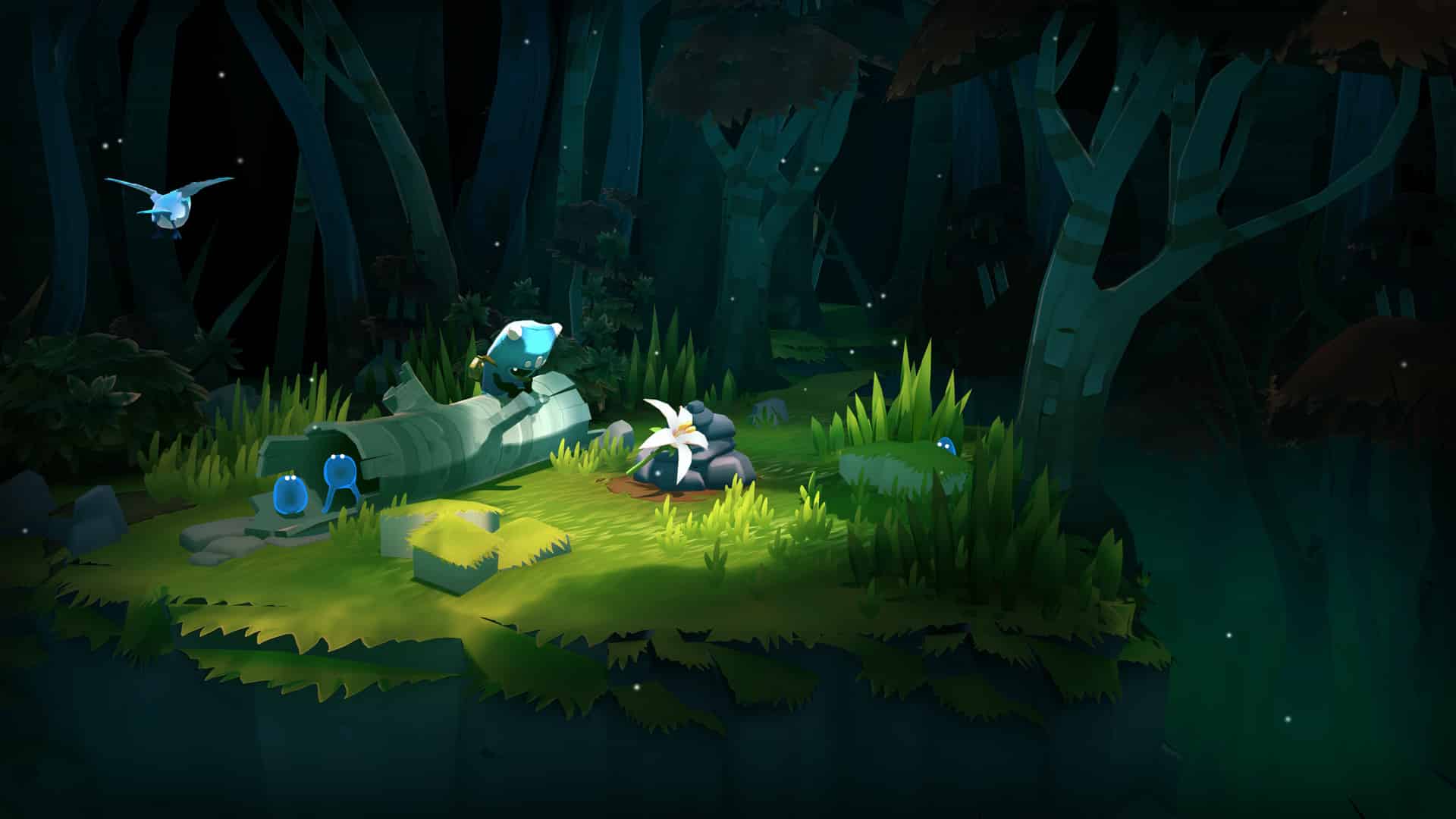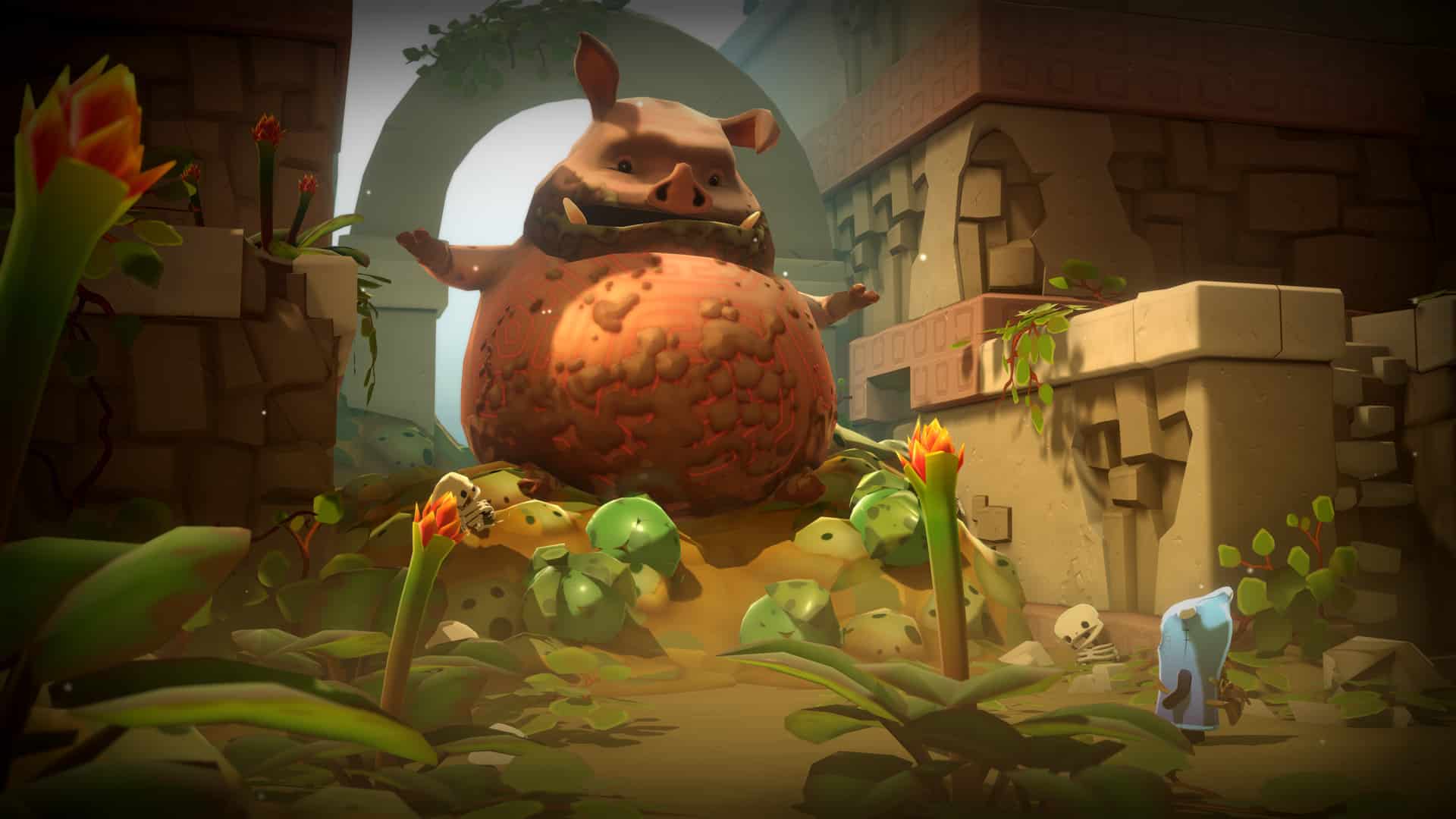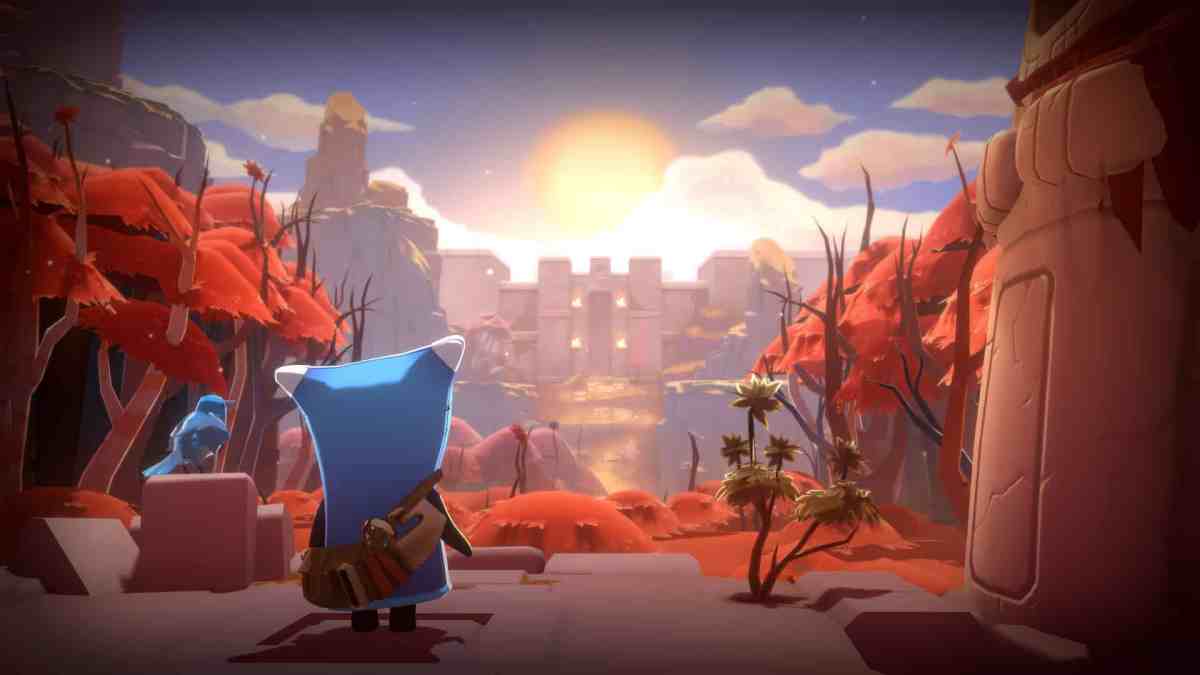The Last Campfire shines when it creates a tangible connection between you as the player and its atmospheric, puzzle-filled world. It’s one of those indie games that slid under the radar, despite being released on PC, all consoles, and even Apple Arcade, but it’s even more surprising when you consider that it’s co-developed by a small team inside of Hello Games, which is best known for No Man’s Sky. But while NMS built up its pre-release hype by promising to deliver the infinite, The Last Campfire succeeds by being a far more intimate experience.
You assume the role of a lost Ember, a creature that resembles a shorter, stockier version of the cloaked travelers from Journey. After a brief-but-effective cutscene that provides a bit of context without spelling things out, and under the watch of some well-written narration, you find yourself lost in a dark forest that seems to act as a sort of middle point between worlds. It’s here that you set off on your adventure to gather up the souls of your fellow lost travelers, who’ve become so weighed down by their struggles in life that they’ve literally turned to stone. It’s ultimately up to you to free them from their bondage and reignite a series of campfires for you all to gather around.
The Last Campfire is less about presenting the endless possibilities of the unknown and more about how even the smallest of us can have a tangible impact on the world around us. While the hub worlds unfold as a web of areas that ultimately feed back into the central bonfire, the more compact puzzle boxes that you visit when you come across one of your kin are the standout. These areas exist as miniature dioramas floating in the middle of space that you enter by finding one of your stone brethren.
By focusing our gaze and attention on these small areas, The Last Campfire is able to create really interesting and interconnected challenges that almost always rely on how we interact with the objects and environment that are laid out in front of us. These miniature worlds reminded me of the shrines from The Legend of Zelda: Breath of the Wild, in that they’re self-contained areas that seem to exist outside of time and space that slowly grow in complexity over time. Throughout the adventure, you’ll find yourself figuring out how to weigh down pressure-sensitive switches, erect bridges across large gaps, use the natural wildlife to your advantage, reroute water using specifically shaped pipes, and transport flames without being blown out by various gusts of wind.
There are no enemies, time limits, or punishments for failure. The Last Campfire isn’t about testing your limits and forcing you to become a better player, but rather challenging you just enough to make the moment you solve a puzzle feel gratifying. And though they never get head-scratching in their difficulty, these areas provide a nice array of puzzles and challenges that keep the short, five-hour adventure feeling consistently fresh. It’s also nice that you can solve most of them in a given area in any order you see fit, which adds a rewarding touch to your curiosity and willingness to go off the beaten path.

Where No Man’s Sky impressed us by exploring infinite possibilities and the sheer scope of the unknown, The Last Campfire succeeds by putting intimate, tactile interactions at the front and center. There’s a great feeling of weight and inertia that comes from plucking a ripe piece of fruit off a tree and using it to have a hungry pig follow behind you. Or in how when you find the right key for the right door, it requires you to physically turn the analog stick or swipe your touch screen to have the notches fit into place. Or in using the magical powers of your horn to take control of special objects and send them rolling and tumbling across the environment, all while maintaining their initial sense of heaviness.
These interactions are particularly satisfying on Switch or a mobile device, as you’ll mimic the actions with a swipe of a finger. Much like The Room, Monument Valley, Florence, and other fantastic mobile games, the very method of tactile interaction has a way of drawing you in closer to the world that many console games simply can’t do, as a controller will always feel like somewhat of an artificial barrier.

Despite some of the rather bleak themes that can be drawn from the game, the world of The Last Campfire just feels cozy to inhabit. The creatures you come across all have a sort of whimsy to them reminiscent of Labyrinth or The Dark Crystal. The sound design is excellent, the music perfectly matches the mood, and holding the world in your hands on Switch or mobile makes it feel like you’re peering into a secret place that was built only for you.
Hello Games has said recently that it has a team working on its next “big” game, which I’m sure will have ambitions more akin to No Man’s Sky. But The Last Campfire stands out to me in how it feels like a direct response to the massive spotlight that the studio was under for the months and years surrounding No Man’s Sky. The scope and scale of this game are more akin to the studio’s early works, like Joe Danger. And without the insurmountable pressure leading up to launch, The Last Campfire almost feels like a creative sigh of a relief.






Published: Sep 13, 2020 02:08 pm